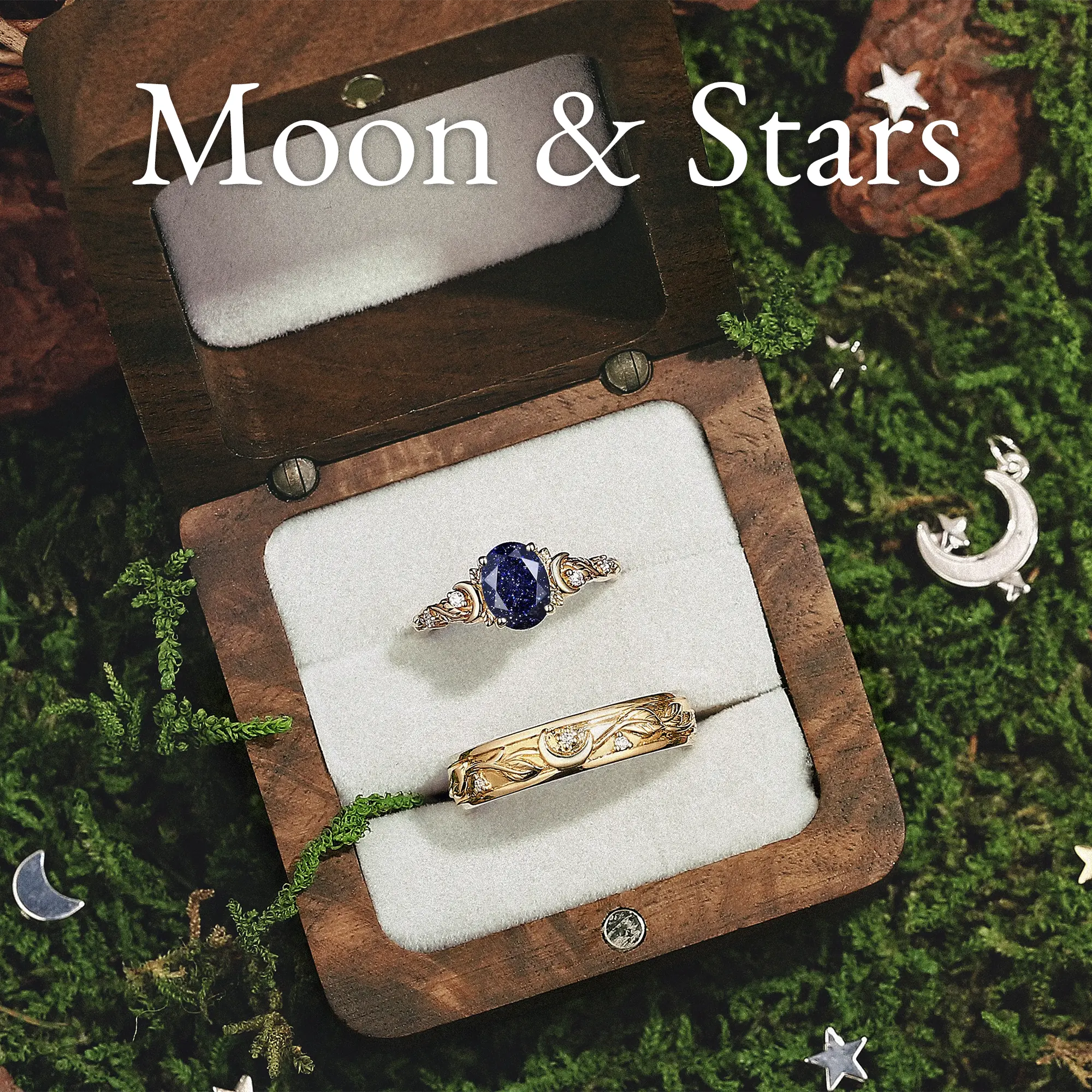When buying jewelry, many people face a dilemma: Which is better, lab-grown or natural? While the two may appear similar in appearance, they differ significantly in their formation process, internal structure, price, environmental friendliness, and collectible value. This article will explain the differences between lab-grown and natural gemstones to help you make a more informed choice.
What are lab-grown gemstones?
Lab-grown gemstones, also known as artificial gemstones, are gemstones "grown" using scientific methods in a controlled laboratory environment. Their chemical composition, physical properties, and optical characteristics are nearly identical to those of natural gemstones, except that the growth process is more controlled and takes significantly less time. The development of lab-grown gemstones stems from advances in modern materials science and technology, enabling gem enthusiasts to obtain high-purity, high-transparency gemstones at a lower price while also meeting their personalized design needs.
The Lab-grown Gemstone Formation Process
The production process for laboratory-grown gemstones is rigorous and includes the following key steps:
1. High-purity raw material selection: Extracting extremely pure materials from minerals or chemical sources ensures the gemstone's pure color and absence of impurities.
2. Crystal growth: Using high-pressure, high-temperature (HPHT) or chemical vapor deposition (CVD) techniques to simulate the Earth's interior, the crystals are slowly grown. This process allows for precise control of the gemstone's size, color, and transparency.
3. Cutting and polishing: After growth, the gemstone is cut and polished by professional cutters to achieve the ideal refraction and brilliance.
Are Laboratory-Grown Gems Really Unnatural?
Despite being called "artificial," laboratory-grown gemstones are not "fake gemstones." Their chemical composition and physical properties are identical to those of natural gemstones, but their formation is controlled by humans, not by natural geological processes. This means that laboratory-grown gemstones possess the beauty and durability of natural gemstones while also being able to scientifically eliminate imperfections and enhance the purity and color uniformity of the gemstones.

What are Natural Gems?
Natural gemstones are mineral crystals formed deep within the Earth by geological processes over millions to hundreds of millions of years. Each natural gemstone is a product of nature, bearing the unique marks and inclusions of the Earth itself. This natural imprint gives it its unique charm and value.
The Natural Birth of Natural Gemstones
Natural gemstones require specific temperature, pressure, and mineral environments to form. For example, diamonds form under high pressure and temperature approximately 150 kilometers deep in the Earth, while rubies crystallize in aluminum-rich minerals. These gemstones grow slowly through a long geological process, are brought to the surface by crustal movement, and are ultimately mined. This long period of natural development gives natural gemstones their unique colors and textures.
The Uniqueness of Natural Gemstones
Every natural gemstone is unique. They may have natural inclusions, slight color bands, or minor flaws. These "natural signs" do not detract from the gemstone's beauty; rather, they serve as important indicators for verifying its authenticity and assessing its value. Furthermore, this natural uniqueness makes natural gemstones more valuable and scarce in the collector's market.
The Difference Between Laboratory-Grown and Natural Gemstones
| Comparison Item | Lab-Grown Gemstone | Natural Gemstone |
|---|---|---|
| Formation | Grown in a controlled laboratory environment, short time | Formed naturally through geological processes over millions to billions of years |
| Chemical Composition | Identical to natural gemstones | Same as lab-grown gemstones |
| Color & Clarity | Uniform, pure, controllable | Natural color variations, may have color zoning or inclusions |
| Internal Features | Few inclusions, can be artificially designed | Natural inclusions, unique to each gemstone |
| Price | Usually 30%-70% cheaper | More expensive, especially rare gemstones |
| Environmental Impact | Eco-friendly, sustainable | Mining may cause environmental damage |
| Collectible Value | Technologically appealing, limited appreciation | Unique, high collectible value |
How to Distinguish Laboratory-Grown and Natural Gemstones?
Professional Instrument Testing
Laboratory-grown gemstones are almost indistinguishable from natural gemstones with the naked eye. Specialized instruments are required: optical microscopes can detect inclusions, infrared spectroscopy can analyze chemical composition, and fluorescence testing can identify differences in gemstone reactions. These methods can accurately identify the gemstone's origin.
Visual Inspection
1. Inclusions: Natural gemstones have randomly distributed inclusions, while laboratory-grown gemstones have fewer or more regularly distributed inclusions.
2. Color Uniformity: Laboratory-grown gemstones have uniform color, while natural gemstones may exhibit slight color banding or gradients.
3. Luster and Refraction: Although the refractive index is similar, natural gemstones may have a slightly muted luster, while laboratory-grown gemstones have a more "clean and shiny" appearance. Explore our collection of moissanite rings.
Durability Comparison of Laboratory-Gemstones and Natural Gemstones
Hardness and Scratch Resistance
Laboratory-grown gemstones have the same hardness as natural gemstones. For example, diamonds reach a Mohs hardness of 10. Both lab-grown and natural diamonds are highly scratch-resistant and suitable for everyday wear.
Long-Term Performance
Both perform similarly in everyday wear, but natural gemstones may have minor inclusions that may slightly affect their brilliance in extreme cases. Due to their higher purity, laboratory-grown gemstones maintain their brilliance more consistently over time.
Why Choose Laboratory-Grown Gemstones?
1. Price Advantage: Laboratory-grown gemstones are typically 30%-70% cheaper than natural gemstones, making them more suitable for those on a budget.
2. Environmental Protection and Sustainability: No geological mining is required, resulting in minimal environmental impact and aligning with modern sustainable consumption concepts.
3. Controllable Color and Purity: You can choose your ideal color and purity based on your personal preferences without compromise.
4. Wide Range of Customization Options: Laboratory-grown gemstones offer greater flexibility to meet unique design and personalization needs, making them ideal for engagement rings or statement jewelry.
Which Gemstone is More Worth Buying?
Based on Budget and Purpose
If you're on a budget or primarily wear it daily, laboratory-grown gemstones offer the best value. If you're looking for a unique collectible or investment value, natural gemstones are more suitable.
Collectible Value and Emotional Meaning
Natural gemstones are more valuable in the collector's market due to their rarity and uniqueness. While laboratory-grown gemstones may appear more modern and technological, their potential for collectible appreciation is limited. Each has its advantages, and the key lies in the purpose and purpose of your chosen gemstone.
Choose your laboratory-grown or natural gemstone ring at lccjewelry. All natural gemstones we sell are ethically sourced.

FAQ
Q1: Are laboratory-grown gemstones suitable for wedding rings?
A: Absolutely. They are hard, pure, and reasonably priced. Customizable to your desired color and purity, they are perfect for everyday wear.
Q2: Are natural gemstones necessarily more expensive than laboratory-grown gemstones?
A: Generally, yes, but the price also depends on the gemstone's rarity, size, cut, and market supply and demand.
Q3: Are there any differences in care requirements for both?
A: Generally, both should be protected from strong impact, high temperatures, and chemicals. Natural gemstones require occasional checks for secure setting, while laboratory-grown gemstones are simple to maintain and are equally safe for long-term wear.
Overall, both lab-grown and natural gemstones have their own advantages: lab-grown gemstones are cost-effective, have pure colors, are environmentally friendly, and are suitable for personalized designs; while natural gemstones are unique, naturally beautiful, and have high collectible value. LCCjewelry recommends choosing based on budget, purpose, and collection intentions.









